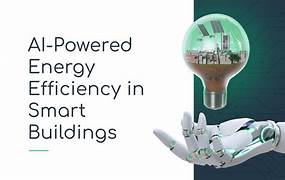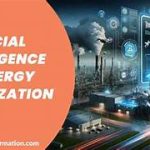AI in Designing Energy-Efficient Buildings and Infrastructure
The pressing need for sustainable development has brought energy-efficient buildings and infrastructure to the forefront of global priorities. Artificial Intelligence (AI) plays a pivotal role in achieving these goals, offering tools and technologies that enhance efficiency, minimize waste, and reduce carbon footprints. From conceptual design to ongoing maintenance, AI transforms how we build and manage structures, paving the way for smarter, greener, and more resilient infrastructure.
The Importance of Energy Efficiency in Buildings
Buildings account for a significant percentage of global energy consumption and greenhouse gas emissions. Energy-efficient designs are critical for mitigating climate change and reducing operational costs. Traditional methods of achieving energy efficiency often rely on static models and manual monitoring, which are limited in scope and adaptability. AI offers dynamic, data-driven solutions that continuously optimize energy use based on real-time information and predictive analytics.
Applications of AI in Energy-Efficient Building Design
1. Smart Building Design Tools
AI-powered design software integrates sustainability principles into the early stages of building planning. These tools allow architects and engineers to:
- Analyze Environmental Impact: AI models simulate the environmental impact of various design options, including material choices and spatial layouts.
- Optimize Energy Performance: Predictive analytics assess how different designs will perform under varying conditions, enabling energy-efficient decisions.
- Facilitate Collaboration: AI platforms enable seamless collaboration among stakeholders, ensuring that energy efficiency remains a shared priority throughout the project lifecycle.
2. Energy Modeling and Simulation
Energy modeling tools powered by AI predict a building’s energy consumption and optimize its performance. These systems can:
- Simulate energy use for heating, cooling, lighting, and other operational needs.
- Provide actionable insights to improve design and system integration.
- Recommend adjustments to align with energy efficiency standards and certifications, such as LEED or BREEAM.
AI in Smart Infrastructure Systems
AI extends beyond individual buildings to optimize entire infrastructure networks, enhancing sustainability across urban landscapes. Key applications include:
1. Predictive Maintenance
AI-enabled predictive maintenance ensures infrastructure systems operate efficiently by:
- Identifying potential failures before they occur.
- Reducing downtime and extending the lifespan of systems and materials.
- Minimizing energy wastage due to malfunctioning equipment.
2. Optimizing Energy Distribution
AI enhances the efficiency of energy grids by:
- Balancing energy supply and demand in real time.
- Facilitating the integration of renewable energy sources, such as solar and wind.
- Identifying inefficiencies in energy distribution networks and suggesting improvements.
3. Transportation and Mobility
AI contributes to energy-efficient transportation infrastructure by:
- Optimizing traffic flow through smart traffic management systems.
- Supporting the deployment of autonomous and electric vehicles.
- Enhancing public transportation systems to reduce reliance on personal vehicles.
AI-Driven Building Management Systems
Once buildings and infrastructure are operational, AI continues to play a vital role in ensuring ongoing energy efficiency. Modern Building Management Systems (BMS) leverage AI to:
1. Monitor and Control Energy Use
AI systems analyze real-time data from sensors and devices to:
- Automatically adjust heating, cooling, and lighting based on occupancy and weather conditions.
- Identify and eliminate energy wastage.
- Provide users with detailed reports and recommendations for improving energy efficiency.
2. Integrate Renewable Energy Sources
AI enables the effective integration of renewable energy systems into building operations by:
- Forecasting energy production based on weather patterns.
- Managing energy storage systems to ensure a stable supply.
- Optimizing the use of on-site renewable energy, such as solar panels.
3. Enhance Indoor Air Quality
AI-powered systems monitor and improve indoor air quality while minimizing energy use. For example:
- Sensors detect air quality parameters such as CO2 levels, humidity, and pollutants.
- Systems adjust ventilation and filtration to maintain healthy indoor environments.
AI’s Role in Retrofitting Existing Buildings
Retrofitting older buildings to meet modern energy efficiency standards is a significant challenge. AI offers solutions that make retrofitting more effective and cost-efficient, including:
- Energy Audits: AI tools assess current energy performance and recommend targeted improvements.
- Intelligent Upgrades: AI suggests the most impactful upgrades, such as better insulation or advanced HVAC systems.
- Ongoing Optimization: Post-retrofit, AI systems continuously monitor performance to ensure sustained efficiency gains.
Challenges and Opportunities
While AI holds immense potential for designing energy-efficient buildings and infrastructure, several challenges must be addressed:
1. Data Privacy and Security
The extensive use of sensors and connected systems raises concerns about data privacy and cybersecurity. Ensuring robust protection measures is essential for building trust.
2. Cost of Implementation
AI systems and the infrastructure required for their deployment can be expensive. However, long-term energy savings and operational efficiencies often justify the initial investment.
3. Skills Gap
Implementing and managing AI systems requires specialized expertise, highlighting the need for workforce training and education.
4. Regulatory Compliance
AI applications must align with local and international regulations related to energy efficiency and environmental protection.
The Future of AI in Sustainable Infrastructure
The integration of AI into energy-efficient building and infrastructure design is poised for significant growth. Future advancements may include:
- AI-Driven Urban Planning: Leveraging AI to design entire neighborhoods and cities that prioritize energy efficiency.
- Self-Learning Systems: AI systems that learn and adapt over time, continually improving their energy-saving capabilities.
- Decentralized Energy Networks: AI facilitating peer-to-peer energy sharing among buildings and communities.
- Circular Economy Principles: AI optimizing material usage and recycling during construction and demolition phases.
Conclusion
AI is revolutionizing the way we design and manage buildings and infrastructure, offering unparalleled opportunities to enhance energy efficiency and sustainability. By harnessing AI’s capabilities, we can create smarter, greener structures that address the challenges of climate change and resource scarcity. As technology continues to evolve, the potential for AI to transform our built environment will only grow, paving the way for a more sustainable future.


